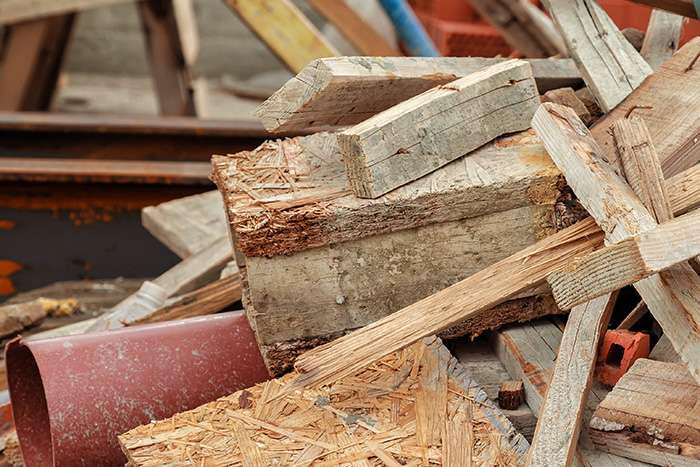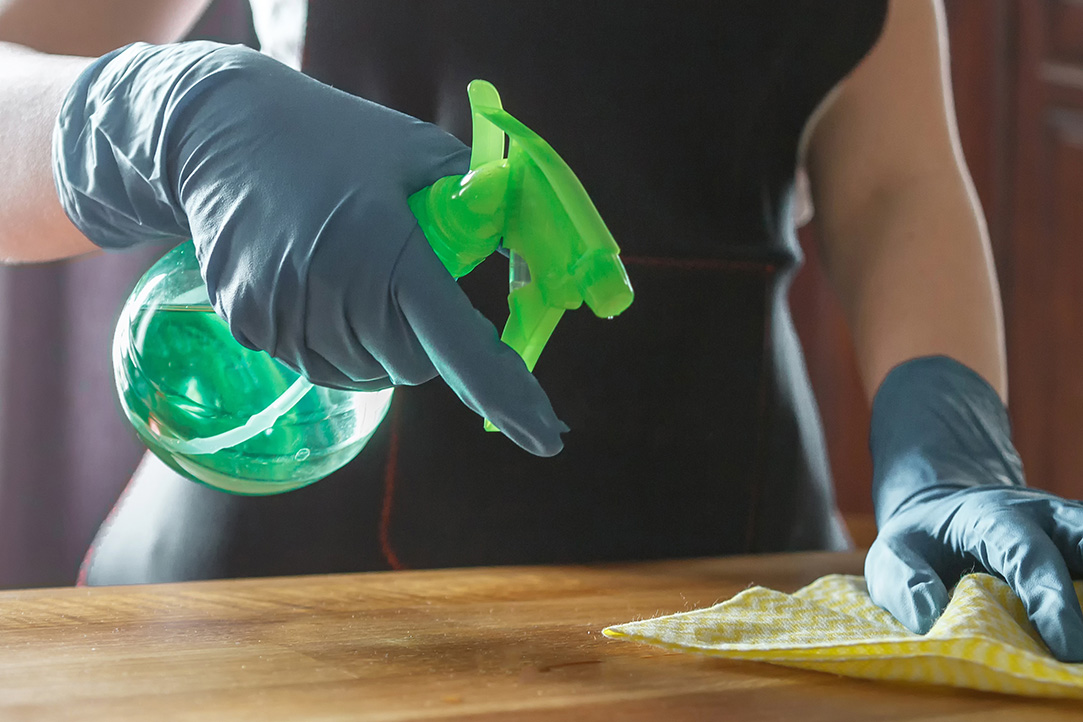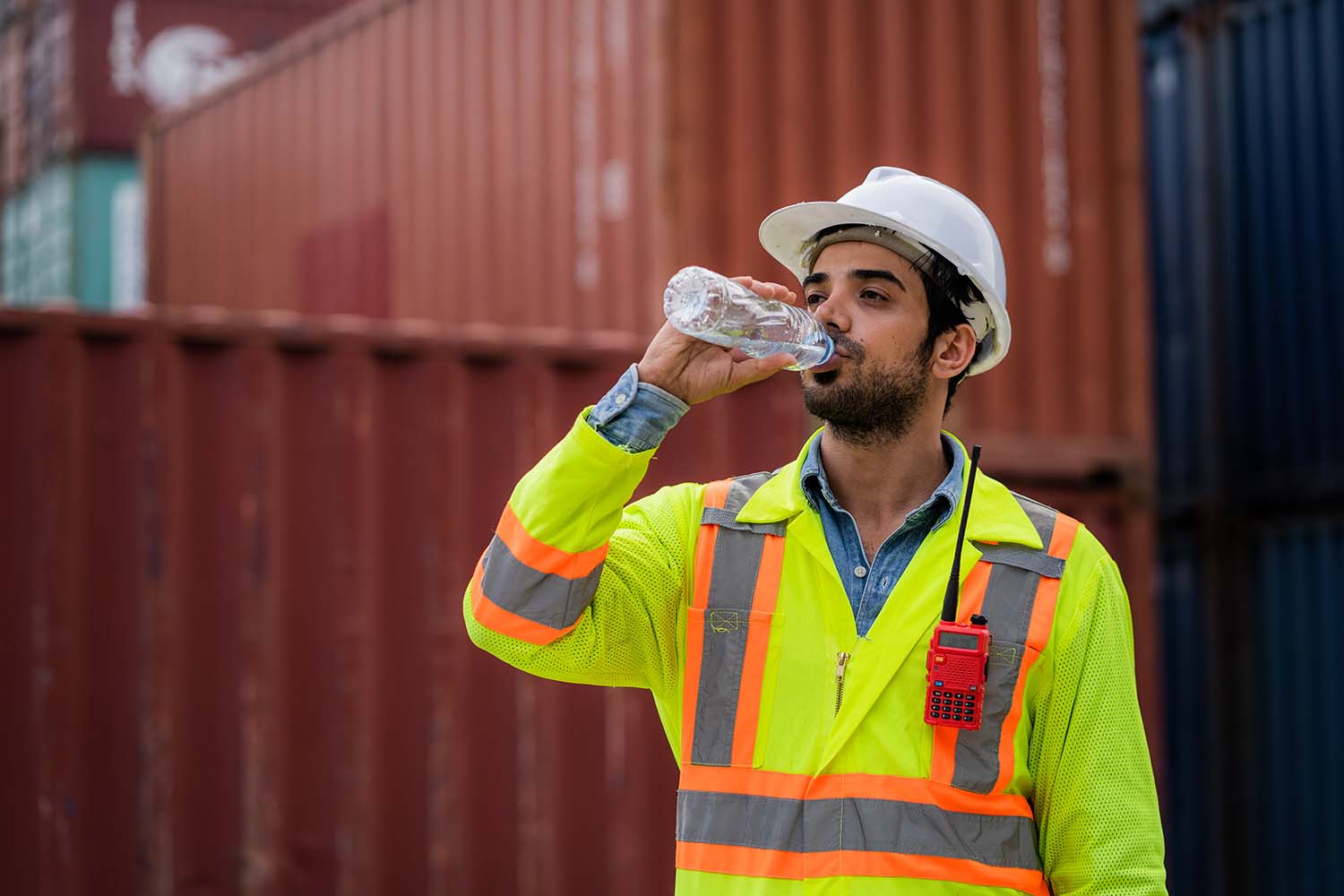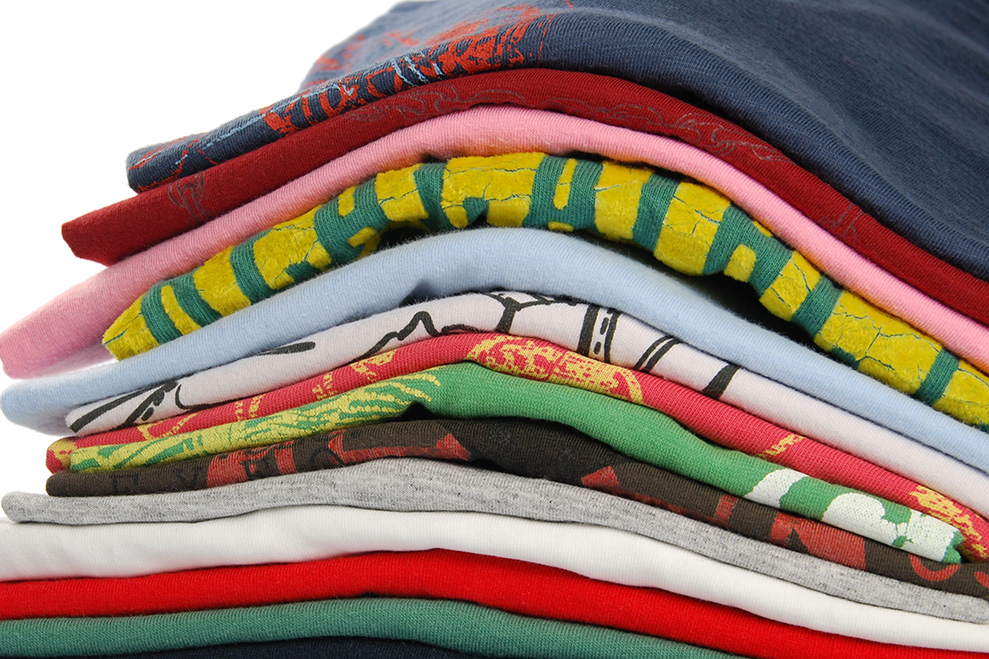

What Does That T-Shirt Really Cost?
By Grainger Editorial Staff 9/7/22


The garment industry is one of the largest resource drains on the environment in the world. Manufacturing one T-shirt, for example, requires approximately 766 gallons of water. The process of dyeing that T-shirt requires anywhere from 25 to 40 more gallons of water, according to the 2019 New Textiles Economy Report by the Ellen MacArthur Foundation. And every time one synthetic piece of clothing or fabric is washed, the process sends thousands of bits of non-biodegradable plastic into the environment. Today, 35% of all microplastics in the ocean come from laundering synthetic textiles like polyester.
T-shirt manufacturing represents one of the biggest opportunities for change in textile manufacturing, mainly because of the sheer volume produced worldwide each year and the resources it requires. Accelerated by "fast fashion" trends that introduce new styles almost continually, annual T-shirt production is expected to reach almost 8 billion pieces by the year 2026. With that demand comes significant waste.
Testing to Improve Quality
MADE Lab is a testing, development and education center located in Fort Worth, Texas. Founded by Brett Bowden and Tom Davenport, the company's mission is to cut down on garment waste and to help manufacturers create better apparel that will be worn more and last longer. Partner Ryan Moor said MADE Labs also trains people how to decorate apparel more efficiently and effectively, so garments have a better chance at longevity, reducing their environmental impact.
“We have a key partnership with the largest distributor/manufacturer of blank decorated apparel in the US, SanMar. We work with them to test garments to ensure they look and perform as expected," Moor said. "We test for screen print, direct-to-garment digital printing, heat transfer and sometimes embroidery. We set up tests to simulate a typical printing operation, and then report back to the manufacturer any problems we run into or anything good we uncover. We also take that information to educate decorators through video, blog content and on-site, hands-on training and educational events."
He sees a lot of apparel that isn’t decorated well and doesn’t last very long because it either falls apart, the color gets washed out or the printing doesn’t turn out as intended.
“When a piece of clothing doesn’t meet expectations or it isn’t what someone wants, it just gets thrown away. The average consumer throws over 70 pounds of apparel away each year. Much of that is due to poor quality. The standard of quality in our industry is so low," Moor said, "and it's not because they're trying to do a bad job. They just don't know how to do a better job.”
New Natural Fibers And Dyes = Less Water
T-shirt manufacturers can help alleviate the problem in a variety of ways, including through alternative materials. T-shirt manufacturers typically use two types of fiber: naturally occurring fibers, such as cotton, and synthetic fibers, such as polyester.
But alternative options like modal or lyocell are considered semi-synthetic. They're derived from the pulp of beech, birch or eucalyptus trees, which is put through a manufacturing process to become usable fibers. Because irrigation isn’t needed to grow trees, the fiber from these trees made to produce textile for T-shirts requires much less water than cotton plants. Trees also grow and produce for much longer than cotton plants, making their use far more sustainable.
“There's also hemp,” Moor said, “which is a natural fiber. There is even corn fiber and soybean fiber. We have many other natural fibers besides cotton we can use, but the problem is they all cost more. When I'm sourcing a T-shirt, I can find a cotton T-shirt for $2.50. A T-shirt that's half cotton, half modal is going to cost $6. If I’m buying in volume and I can't afford the $6 shirt, I’m going with the $2.50 shirt to stretch my budget.
"But if that $2.50 shirt doesn’t print well and ends up in the garbage, then we've wasted everything, and everyone’s time and effort.”
Some textile manufacturers are using more eco-friendly dyes that use 25% less water while also reducing the overall process time, which has the added benefit of lower energy consumption. Other manufacturers are eliminating final laundering in their finishing processes, using a process called ozone finishing that can create stonewash effects using pumice stones instead of water.
Clothing manufacturers can go beyond using more sustainable fabrics. For example, according to Earth.org, fast fashion manufacturers can hire people to source materials from second-hand stores.
The way a piece of clothing is designed can also make a difference. Clothing with complicated patterns may be prone to manufacturing error which contributes to waste. Clothing with reversible designs, on the other hand, offers more options for wear potentially extending the life of that garment.
Consumers Have a Role, Too
The first thing consumers can do is consider buying less. The team at MADE also encourages people to take a closer look at what they are buying to make sure it's manufactured for quality. For example, instead of buying three shirts that cost $15 each, consider buying one shirt that costs $30 from a higher-quality brand they know is committed to more environmentally friendly processes. As fast fashion leads to a glut at thrift stores, buying better quality at the outset might be more desirable even for budget-conscious shoppers.
Other ideas for consumers to reduce their fashion footprint include using cold water when washing, thinking twice before tossing a garment away, and if clothing can still be worn, they can consider selling it on second-hand websites or donating it. Textile recycling is another option for passing along used clothing. There are many stand-alone textile recyclers, while some retail clothing stores also have recycling bins.
By spreading awareness about the environmental impact of textiles and how they are manufactured, the team at MADE hopes manufacturers and consumers can move toward a more sustainable clothing mindset.
![]() More SUSTAINABILITY KnowHow For You
More SUSTAINABILITY KnowHow For You
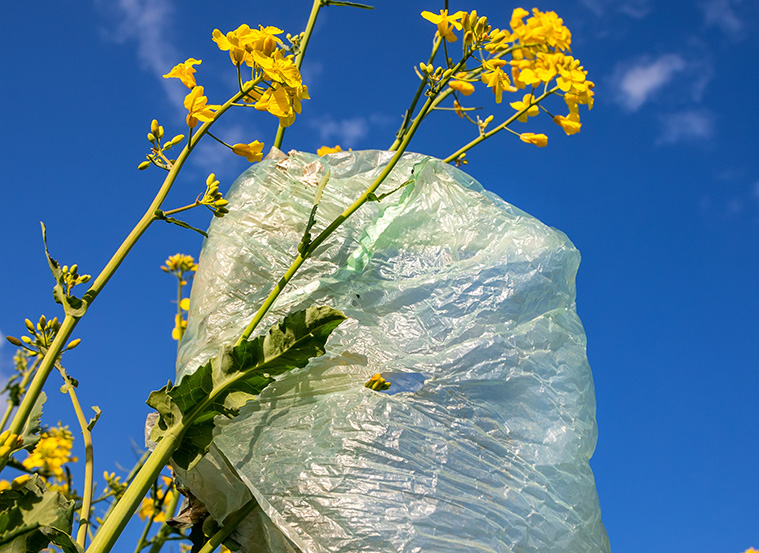
Sustainability
Recycling Symbols and What They Mean
This article explains the many recycling symbols for plastic, paper and glass, and offers general guidelines on how to recycle these materials.
The information contained in this article is intended for general information purposes only and is based on information available as of the initial date of publication. No representation is made that the information or references are complete or remain current. This article is not a substitute for review of current applicable government regulations, industry standards, or other standards specific to your business and/or activities and should not be construed as legal advice or opinion. Readers with specific questions should refer to the applicable standards or consult with an attorney.

